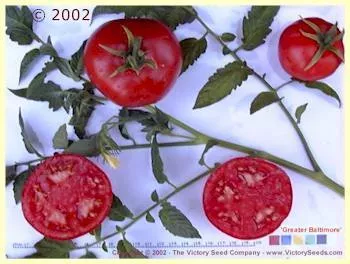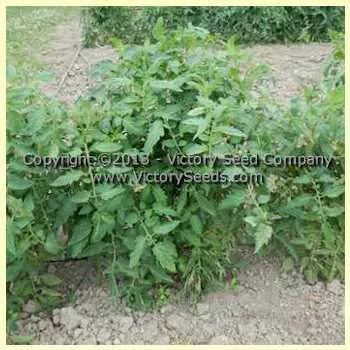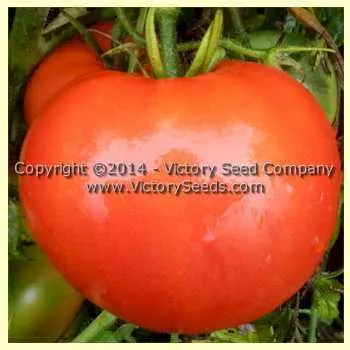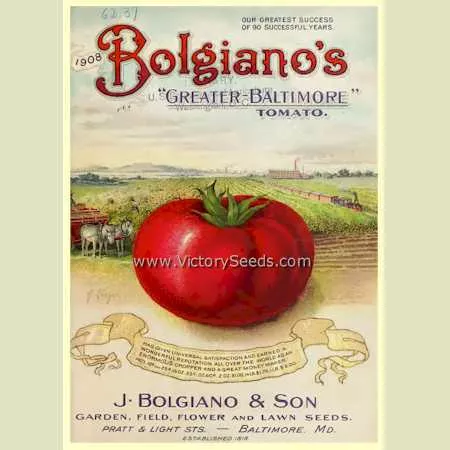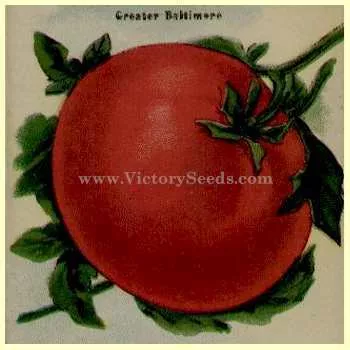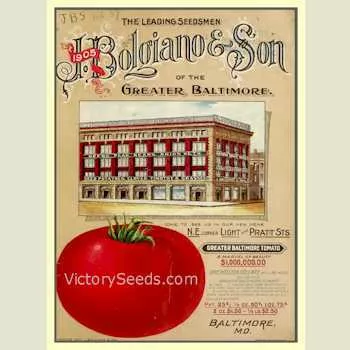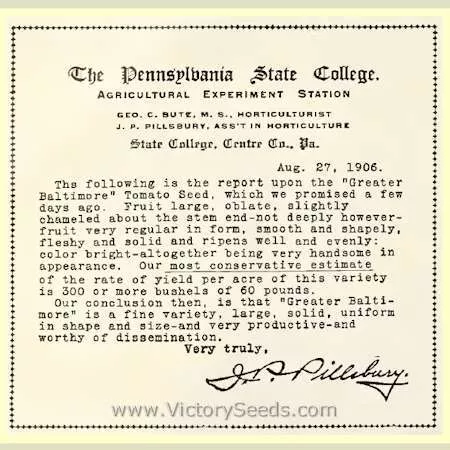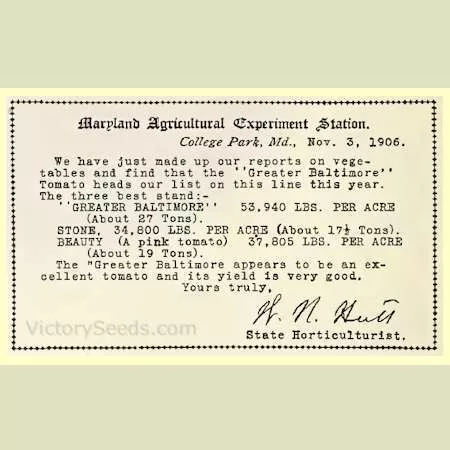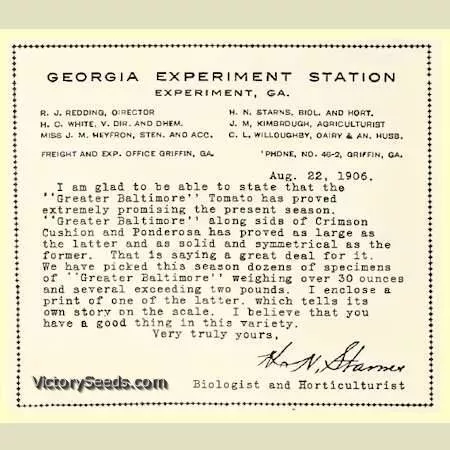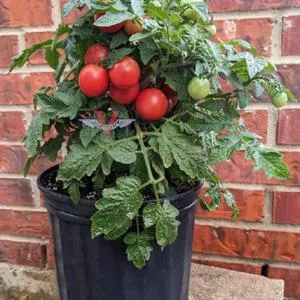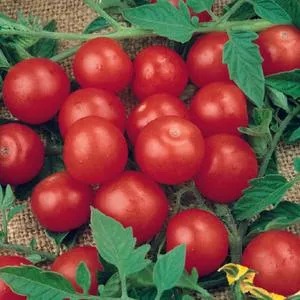








Greater Baltimore Tomato
Solanum lycopersicum
Price: $3.45
SKU: 3400611VERY IMPORTANT NOTE: This variety will be available again in early January, 2026. Please signup below to be notified when it becomes available. Click here to learn more about our seasonal products.
95 days, indeterminate - The plants have regular leafed foliage with fruit that are red in color, slightly flattened globe in shape, and average five to six ounces each. Its flavor is not sweet but quite mild (sub-acid) for a red.
'Greater Baltimore' quickly became popular and remained an important variety in the canning regions, except in shorter season areas, well into the twentieth century. It was also offered by most of the seed companies and popular with home and smaller market gardeners.[4]

'Greater Baltimore' quickly became popular and remained an important variety in the canning regions, except in shorter season areas, well into the twentieth century. It was also offered by most of the seed companies and popular with home and smaller market gardeners.[4]

It is reported to have been developed from a single plant selection made about 1900 by John Baer of Baltimore, Maryland. The plant was discovered in a field of Livingston's 'Stone' and discovered to be wilt resistant. It was released by J. Bolgiano & Sons of Baltimore in 1905.[1,4]
Fruit Color: Red
Harvest Timing: Late Season
Harvest Timing: Late Season
Sow seeds indoors (do not direct sow into the garden), using sterile seed starting mix, 6 to 8 weeks before your last expected frost date. Plant 1/4" deep, water lightly but keep moist until emergence.
Full light and cooler temps (60° to 70°) will help to prevent the seedlings from becoming too leggy. If plants become rootbound before you can safely set them into the ground, transplant them into larger pots.
Harden off plants before planting outside. Young plants are very susceptible to frost and sunburn damage. Avoid too much nitrogen. Water evenly but not in excess.
Click here to view our full tomato growing guide.
Full light and cooler temps (60° to 70°) will help to prevent the seedlings from becoming too leggy. If plants become rootbound before you can safely set them into the ground, transplant them into larger pots.
Harden off plants before planting outside. Young plants are very susceptible to frost and sunburn damage. Avoid too much nitrogen. Water evenly but not in excess.
Click here to view our full tomato growing guide.
Informational Resources:
- "Descriptions of Principle Types of American Varieties of Tomatoes", USDA, October, 1933.
- J. Bolgiano & Sons Seed Annual, 1905.
- J. Bolgiano & Sons Seed Annual, 1908.
- "Tomato Varieties," by Gordon Morrison, Michigan State College A.E.S., Special Bulletin 290, April 1938
Customer Reviews:
Do you have experience with this one? 📝 📣 Write a review!
No reviews have been posted yet.

